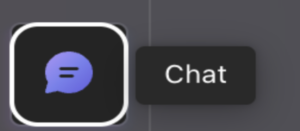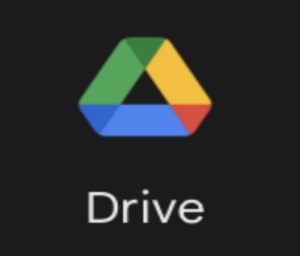With the rise of virtual meetings, many platforms have been developed, and numerous tools and features have been introduced to enhance smooth communication between coworkers, classmates, students, and teachers. Microsoft Teams is a powerful platform offering various features to ensure that meetings are interactive. For instance, if you want to store important information, you can simply record the meeting. When integrated with Krisp, communication becomes smoother free from background noise. Adding other tools to enhance the platform makes it even more efficient in addressing potential issues. So, how do you download Teams recordings, whether recorded by you or others? We’ll answer this question below. Keep reading to find out.
Why Download Teams Recordings?
Meetings, lectures, and webinars can sometimes feel overwhelming due to the amount of information being shared. When important information is presented, we often struggle to write it all down or try to record it with our phones. However, with platforms like Microsoft Teams, we can now listen more comfortably without the stress of missing details. Microsoft Teams can record the entire conversation if needed, allowing you to relax and focus on the lecture without worrying about taking notes.
For an even more worry-free experience, you can integrate Teams with Krisp. Not only does Krisp provide noise-free communication, but its AI Meeting Notes and Summary tool will also capture and highlight important information. We are fortunate to be at the center of these innovations, where you can simply engage with the content, reflect on what the lecturer just said, and enjoy the process without the pressure of writing down every word.
Downloading your recordings from Microsoft Teams is crucial. Having all the information easily accessible is incredibly helpful, especially when you need to revisit details you may have forgotten.
How To Download Teams Recording
Downloading Teams recordings is easier. Follow these steps, and your recordings will be safely saved on your device.
Step-by-Step Guide:
Access Microsoft Teams: Open Microsoft Teams on your desktop or web browser and navigate to the team or meeting where the recording took place.
Find the Recording: Go to the Chat or Channel where the recording was shared. The recording should appear in the conversation thread after the meeting.

Click on the Three Dots (More Options): On the right side of the recording, click on the ellipsis (three dots) to access additional options.

Select “Open in OneDrive”: The recording will be stored in OneDrive (for private meetings) depending on how your organization is set up. Click to open the recording.

Download the Recording: Once the recording is opened in OneDrive or SharePoint, click the Download button at the top of the page to save the file to your device.
How to Download Recording from Microsoft Teams
There may be times when you aren’t the one hosting or recording the meeting or lecture, but you’re the one who needs access to it. Having a recording allows you to review important information, whether it’s for completing a task or clarifying specific details. In any case, downloading the recording is always a good idea for future reference.
- Access the Recording Link: If the meeting organizer has shared the recording link in the chat or channel, you can easily access it. Click on the link to open it.
- Sign in to Microsoft OneDrive: You will be directed to OneDrive (for private meetings) or SharePoint (for channel meetings). Log in with your Microsoft credentials to access the recording.
- Download the Recording: Once the recording opens, click on the Download button to save the file to your device. Make sure you have the necessary permissions to access and download the file.
How to Download Microsoft Teams Recording Recorded by Others
Remember asking a friend for lecture notes or asking in school if they wrote down the homework? We’re in a similar situation now but with a better and easier solution. If you missed a meeting, you can simply ask a colleague to send you the recording.
If you’re looking to download a recording made by another user, it depends on the permissions granted by the meeting organizer. Typically, the meeting host controls access to the recordings, but if you’re part of the team or channel where the recording is shared, you should be able to download it.
Step-by-Step Guide:
- Check Your Permissions: Ensure that the meeting organizer or the person who recorded the meeting has shared the recording with you. They may need to adjust the sharing settings in OneDrive or SharePoint.
- Access the Recording: Go to the Chat or Channel where the recording was shared. If it’s available, you’ll see it in the conversation thread.
- Open in OneDrive or SharePoint: Click the three dots (ellipsis) next to the recording, then choose “Open in OneDrive” or “Open in SharePoint.”
- Download the Recording: After the recording opens in OneDrive or SharePoint, click the Download button to save it to your local device.
Troubleshooting: Why Can’t I Download a Teams Recording?
Don’t worry if you encounter some issues. Just find out how you can solve them. Here are a few common reasons and solutions:
- Insufficient Permissions: If the meeting host has not shared the recording with you, you may not have permission to download it. Ask the organizer to adjust the sharing permissions.
- Recording Expired: This is a very important part. All recordings have an expiry date, which is usually decided by the organizer. Recordings in Teams may expire if not downloaded or saved within a certain period. Check with your administrator to ensure the recording is still available.
- Wrong Platform: Ensure you’re accessing the recording from the correct platform, either OneDrive for private meetings or SharePoint for channel meetings.
- File Not Available: If the recording was deleted or moved from its original location, it might no longer be accessible.
Conclusion
It’s essential to preserve important information from meetings or lectures, as you never know when you might need to reference it—whether it’s for an exam or a key detail from a project discussion. Downloading your Teams recordings is a safer option than leaving them stored in the cloud, as recordings can expire over time. Whether you’re the host or a participant, having easy access to recordings helps you stay informed and review crucial discussions whenever necessary. For an even better experience, consider integrating additional tools like Krisp. It enhances your Teams experience with noise-free communication and AI-powered meeting summaries.
Downloading Teams recordings is easy. Just read the instructions in this article and follow them carefully. Whether you or another user made the recording, ensuring the correct permissions are in place is key. With the right tools and knowledge, you’ll never miss out on important meeting content again.
FAQ
To download a Teams recording, navigate to the chat or channel where the recording was shared. Click on the ellipsis (three dots) next to the recording, select “Open in OneDrive” or “Open in SharePoint,” and then click the “Download” button to save the file to your device.
If you’re looking to download a recording made by someone else, ensure that the meeting organizer has shared the recording with you. Go to the chat or channel where the recording was posted, click the three dots (ellipsis) next to the recording, select “Open in OneDrive” or “Open in SharePoint,” and click the “Download” button. If you don’t have access, request the meeting organizer to adjust the permissions.
To give permission for others to download a Teams recording, open the recording in OneDrive or SharePoint, click the “Share” button, and adjust the sharing settings. You can either grant specific individuals access or share a public link. Ensure you select “Can View” or “Can Edit” based on the level of access you want to provide.


